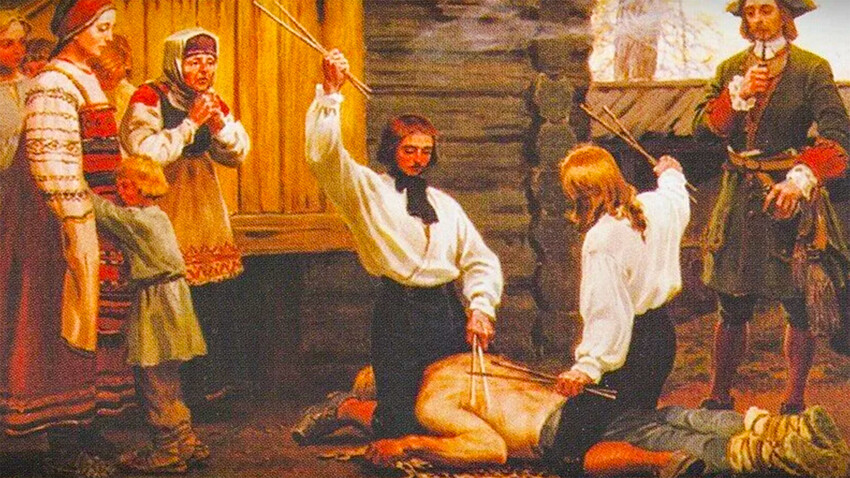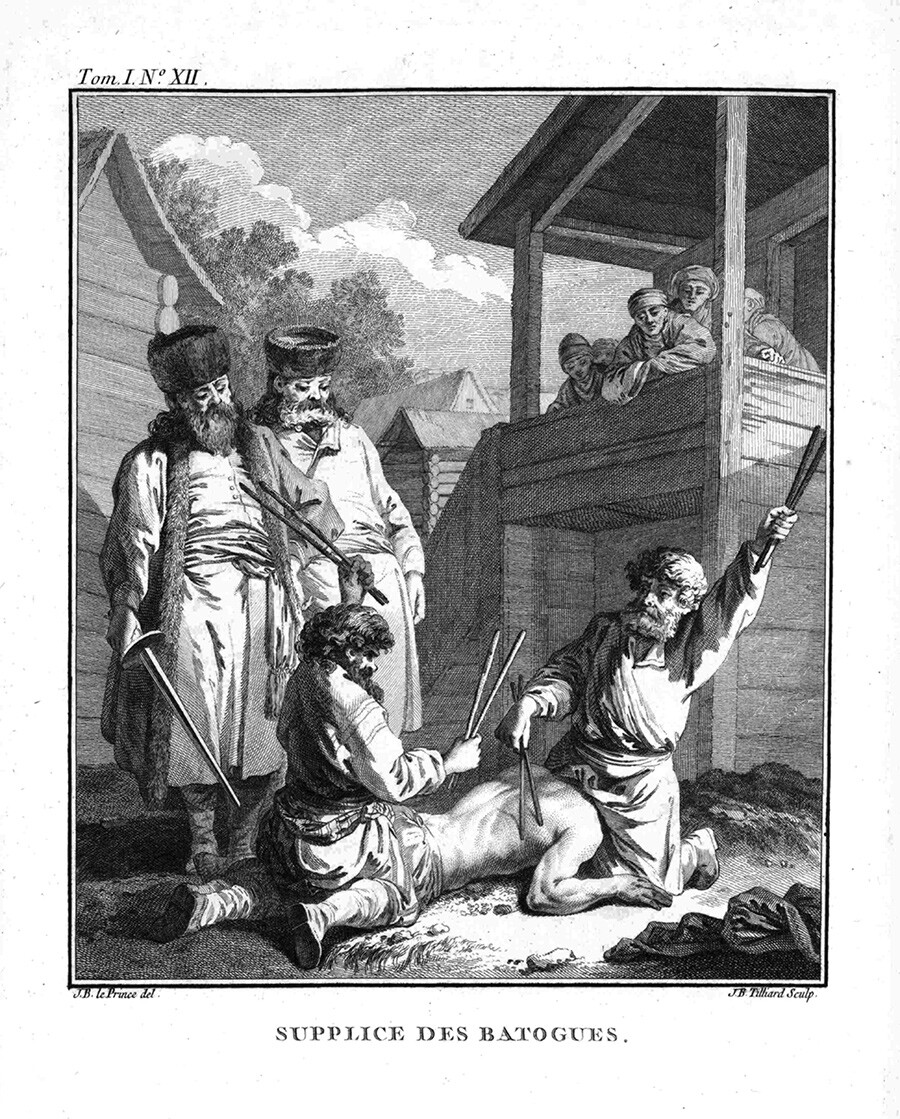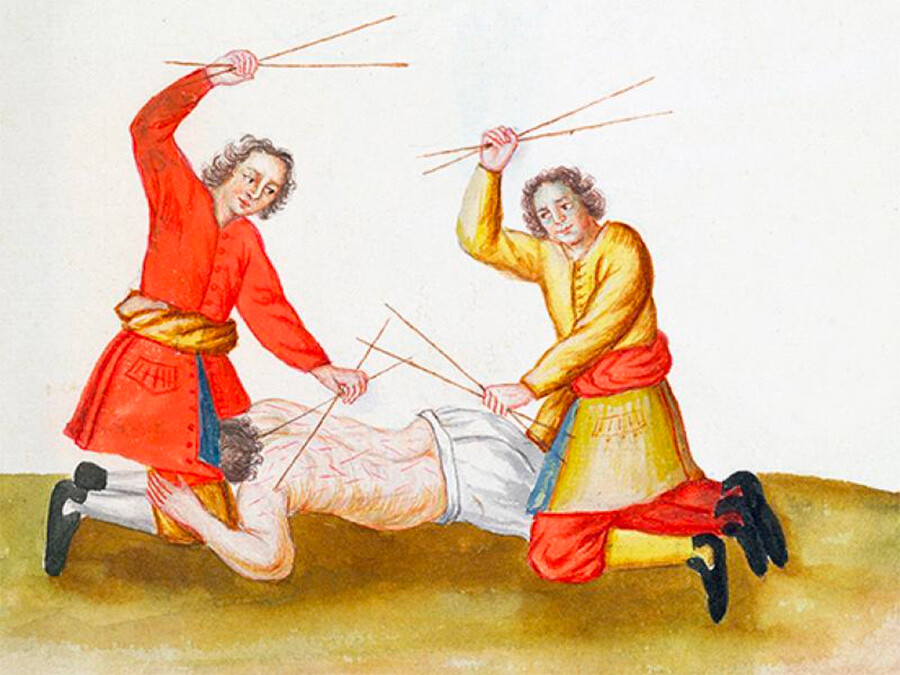

‘Batogs’ were sticks or thick rods, which were used to beat those who were guilty of something. In the Cathedral Code of 1649 - the code of laws of the Russian state - there was a whole list of offenses, for which the punishment prescribed was beating with ‘batogs’. For example, for appearing in court with weapons, petitioning the tsar to bypass orders, deserting service and false denunciations, among countless other misdemeanors - even for failing to catch a thief.

The guilty were not only hurt, but also shamed. Executioners would sit on their feet and head and beat them on the back until the order to stop the punishment was sounded or until the ‘batog’ broke. At the same time, it was necessary to shout "Guilty!" and, in the end, bow and kiss the executioners’ legs.
Dear readers,
Our website and social media accounts are under threat of being restricted or banned, due to the current circumstances. So, to keep up with our latest content, simply do the following:
If using any of Russia Beyond's content, partly or in full, always provide an active hyperlink to the original material.
Subscribe
to our newsletter!
Get the week's best stories straight to your inbox